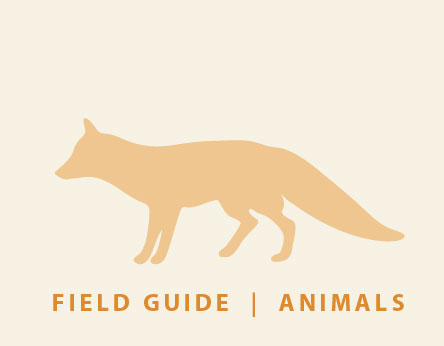
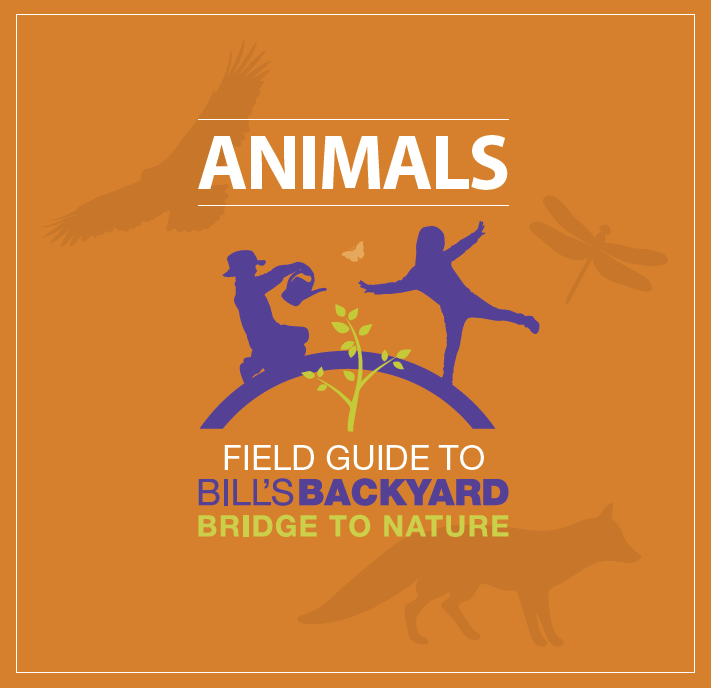

The animals found in this field guide are all native to the San Francisco Bay Area and each animal has an important role in keeping our ecosystem healthy.
See if you can spot all ten of these animals in bronze placed around Bill’s Backyard. If you’re lucky, you might just spot the same live animals on your next outdoor adventure.

California Ground Squirrel
Spending most of its time on or under the ground, this squirrel is active during the day and can often be seen gathering food to bring back to its burrow.
DIET
Grass, seeds, berries, acorns, mushrooms, insects, bird eggs, and occasionally small mammals
HABITAT
Areas where soil is loose enough to burrow; they are common in most parts of California.
FUN FACT
The California ground squirrel's burrows provide homes to many other animals including frogs, mice, and tarantulas. Burrowing owls and foxes even enlarge abandoned squirrel dens to create homes.
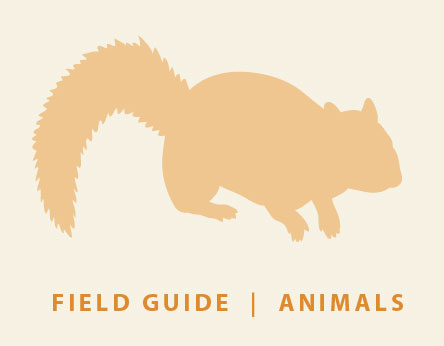
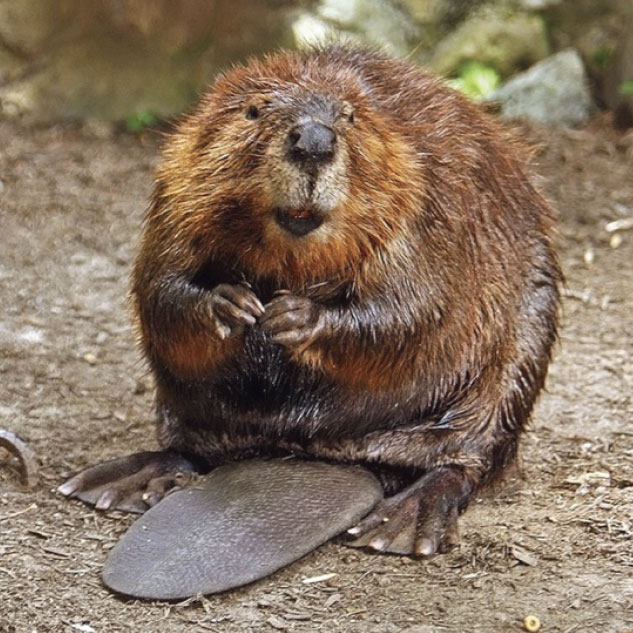
North American Beaver
One of nature's best engineers, beavers can change their environment by damming rivers, which then flood to become wetlands, providing habitats for other animals.
DIET
Shrubs, aquatic plants, and especially the tree bark of willow, aspen, birch, and maple trees
HABITAT
Streams that have slow moving water and access to their favorite foods, in most areas of North America
FUN FACT
Beavers are good swimmers with webbed back feet and leathery tails that help them steer in the water.
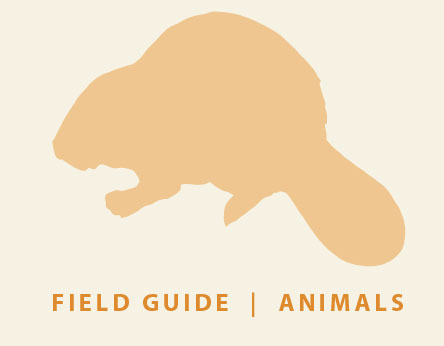

Photo Credit: Don Debold
Bobcat
The most common wildcat in the United States, bobcats get their name from their short, bobbed tails.
DIET
Rabbits, squirrels, mice, birds, lizards, bats, and occasionally deer
HABITAT
Wetlands, deserts, forests, and grasslands in almost every environment in the United States
FUN FACT
Just like housecats that use scratching posts, bobcats claw on logs, trees, and fence posts to mark their territory.
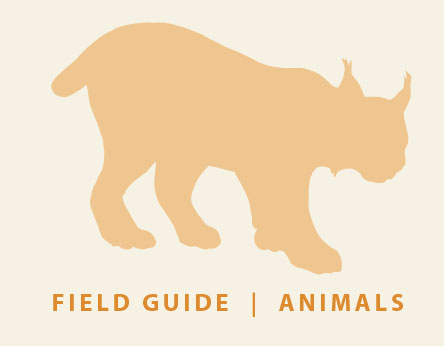

Photo Credit: Greg Hume
Red Tailed Hawk
Named for their bright cinnamon-red colored tail feathers, these hawks are one of the Bay Area’s most common birds of prey.
DIET
Mice, squirrels, rabbits, smaller birds, lizards, and snakes
HABITAT
Open areas where they can easily spot prey or perched on treetops or telephone poles
FUN FACT
When you hear a hawk or eagle screeching in a movie, it’s almost always the call of a red-tailed hawk.
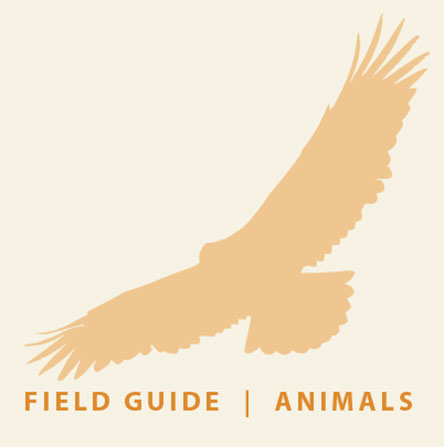

Photo Credit: Kenneth Dwain Harrelson
Western Monarch Butterfly
Like other butterflies, monarchs are pollinators that help plants to make fruit and seeds by spreading pollen from one flower to another.
DIET
Adult butterflies drink flower nectar; caterpillars eat only the leaves of milkweed plants
HABITAT
California coast in winter and the Sierra Nevada foothills in summer; sometimes migrating as far south as Mexico
FUN FACT
Although milkweed is toxic to many animals, monarch caterpillars can eat the leaves without a problem. The caterpillars become toxic, and their black and yellow stripes serve as a warning that they are a dangerous snack to eat!
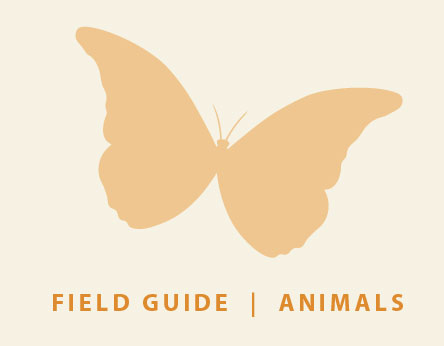

Photo Credit: T/C
Acorn Woodpecker
These birds are best known for storing thousands of acorns in trees to eat during the winter.
DIET
Acorns, flying insects, tree sap, and fruit
HABITAT
Oak woodlands and urban environments, using the same granary tree to store acorns year after year, generation after generation
FUN FACT
Acorn woodpeckers live in large family groups and share responsibilities. Many different females lay eggs in one tree cavity and take turns.
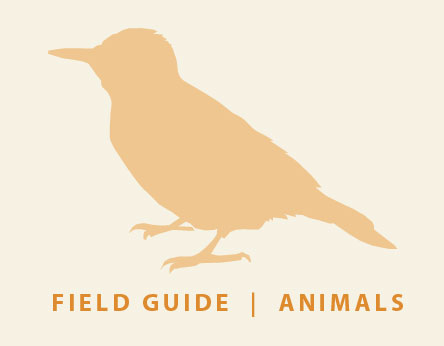

Photo Credit: T/C
Western Fence Lizard
One of the most common lizards in California, male Western Fence lizards have a bright blue belly and are often seen doing "pushups" as a way to defend their territory.
DIET
Ants, flies, beetles, spiders, and other invertebrates
HABITAT
Backyards and urban environments, often perched on fence posts, rocks, stumps, and trees; not found in deserts or damp forests.
FUN FACT
Western fence lizards shed their tails to confuse predators. The tail stays behind wiggling to distract the predator while the lizard runs away, and a new tail grows in several weeks.
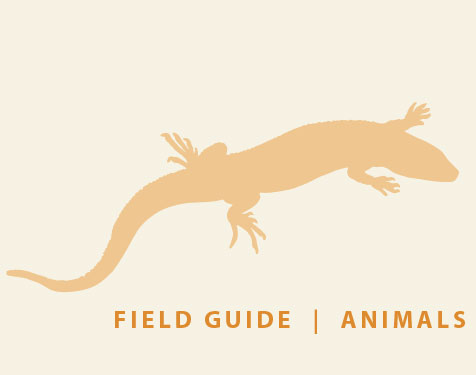

Raccoon
These medium-sized mammals are best recognized by the black “mask” over their eyes and their ringed tails.
DIET
Seeds, fruits, fish, frogs, crayfish, bird eggs, small mammals; pet food and trash in urban areas
HABITAT
Tree cavities or burrows in the wild, but also in urban environments throughout the United States; not found in Nevada and the Rocky Mountains
FUN FACT
Raccoons use their small, hand-like front paws to feel objects instead of looking at them. They often dip objects in water and roll them around in their ‘hands’ to feel and observe them.
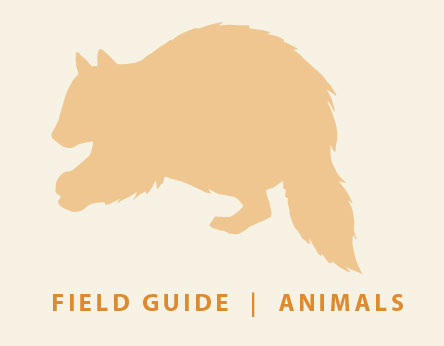

Photo Credit: GAILHAMPSHIRE
Dragonfly
The San Francisco Bay Area has over a dozen different types of native dragonflies. Because dragonflies need freshwater to survive, their presence is a sign of a healthy aquatic environment.
DIET
Adult dragonflies eat insects like butterflies, and smaller dragonflies; Juveniles eat mosquito larvae, tadpoles, and small fish
HABITAT
Eggs laid in water hatch and grow before going through metamorphosis; adults fly in open spaces to catch insect prey
FUN FACT
Prehistoric dragonflies, called meganeura, lived 300 million years ago and had a wingspan the size of a seagull’s (about 2 feet)!
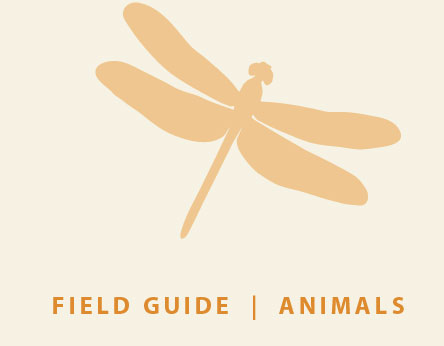
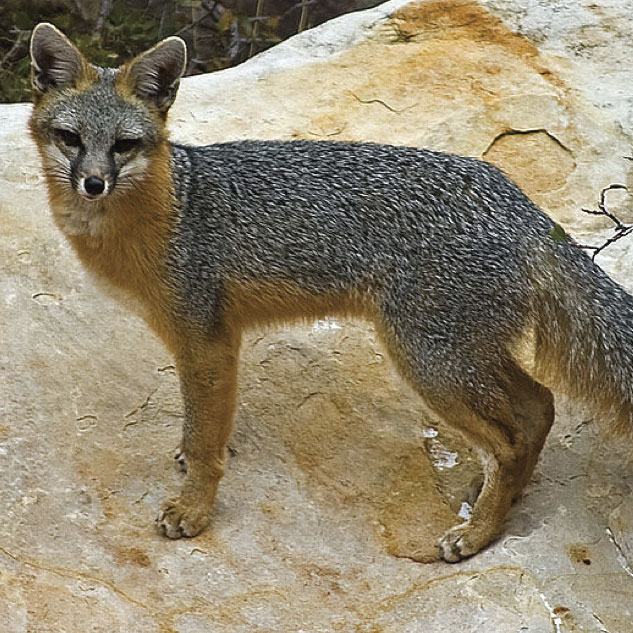
Photo Credit: James Marvin Phelps
Gray Fox
With distinctive tails sporting a black tip and stripe, these small foxes are not much bigger than housecats.
DIET
Small mammals, lizards, fruits, beetles, butterflies, and moths
HABITAT
Forests, grasslands, and the edges of farmland throughout the United States; except in the Great Plains and Rocky Mountains
FUN FACT
Unlike other members of the canine family, gray foxes can climb trees.
